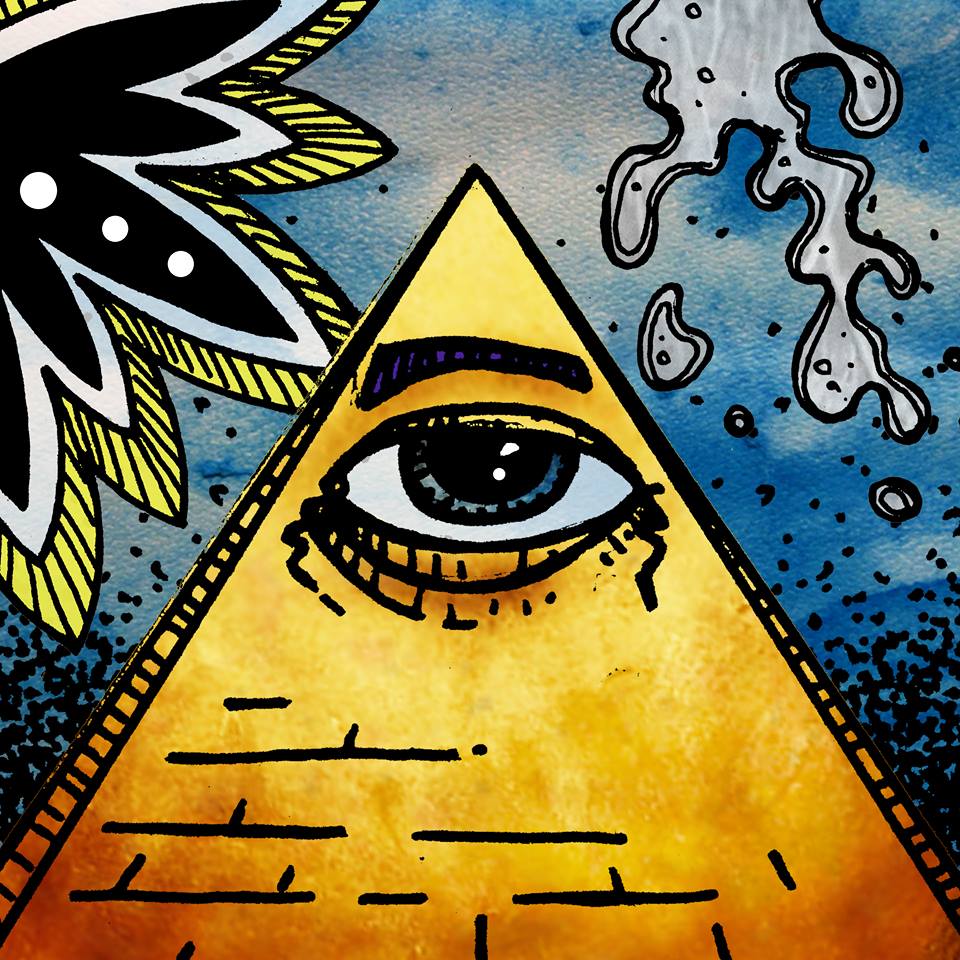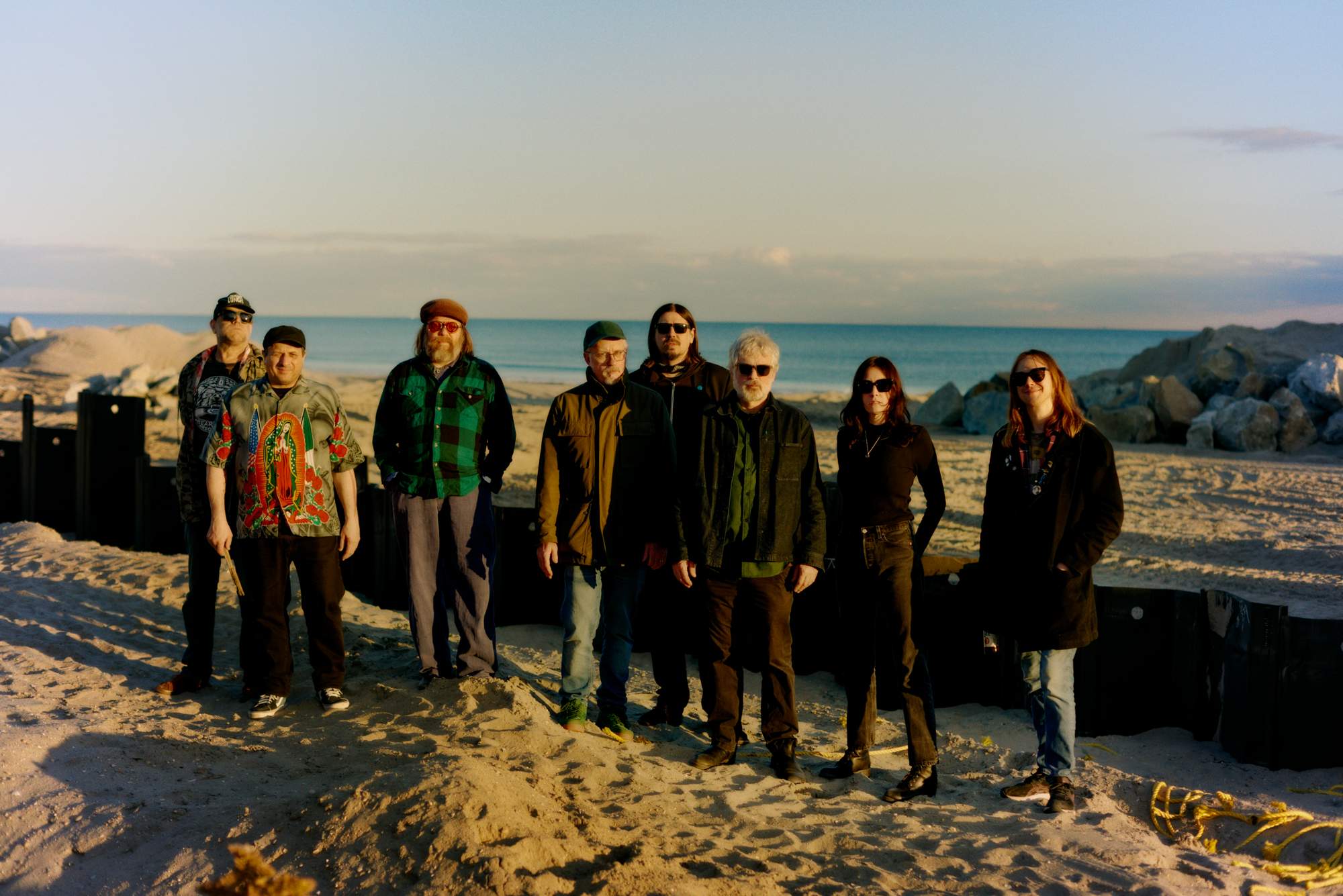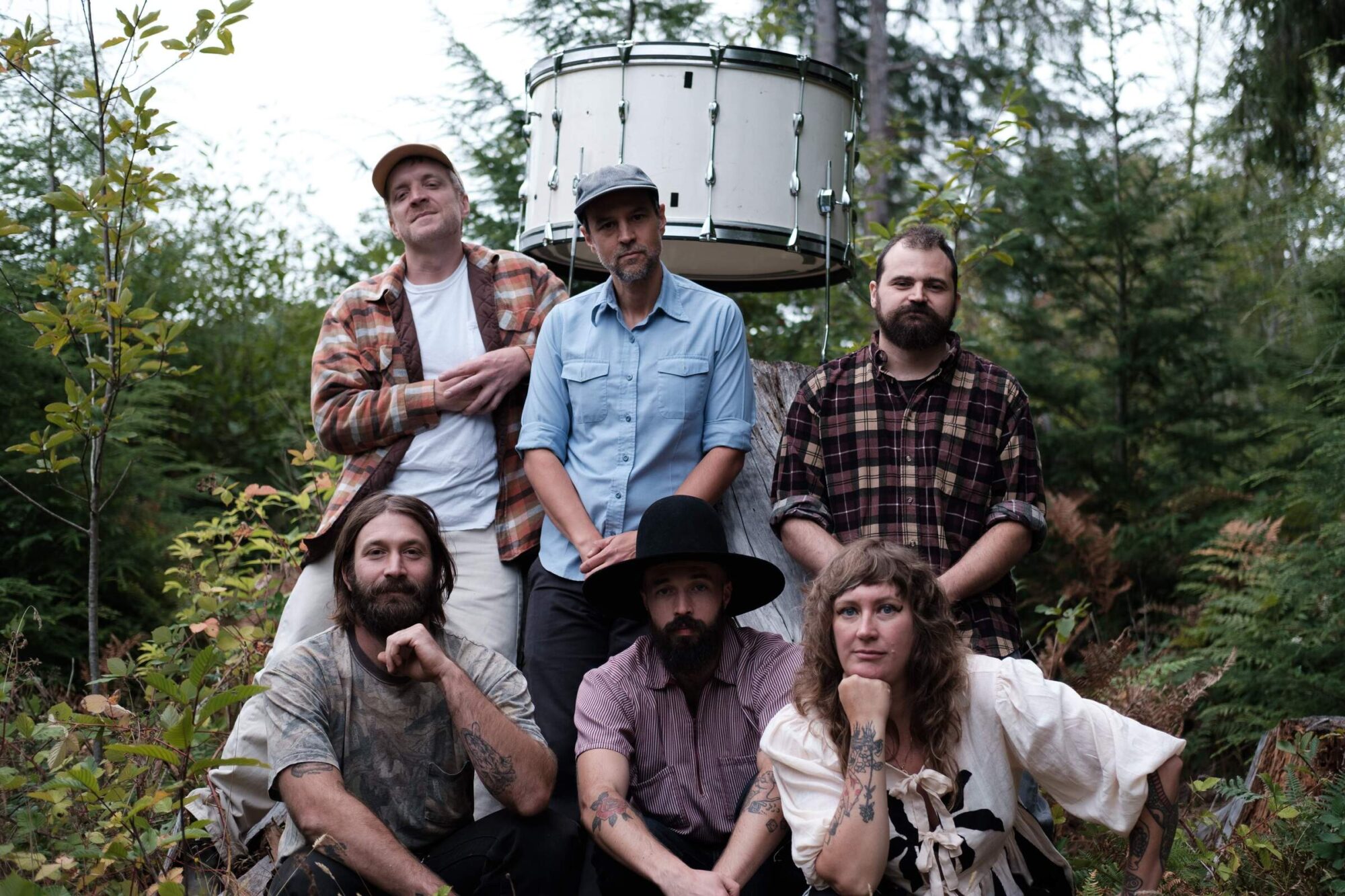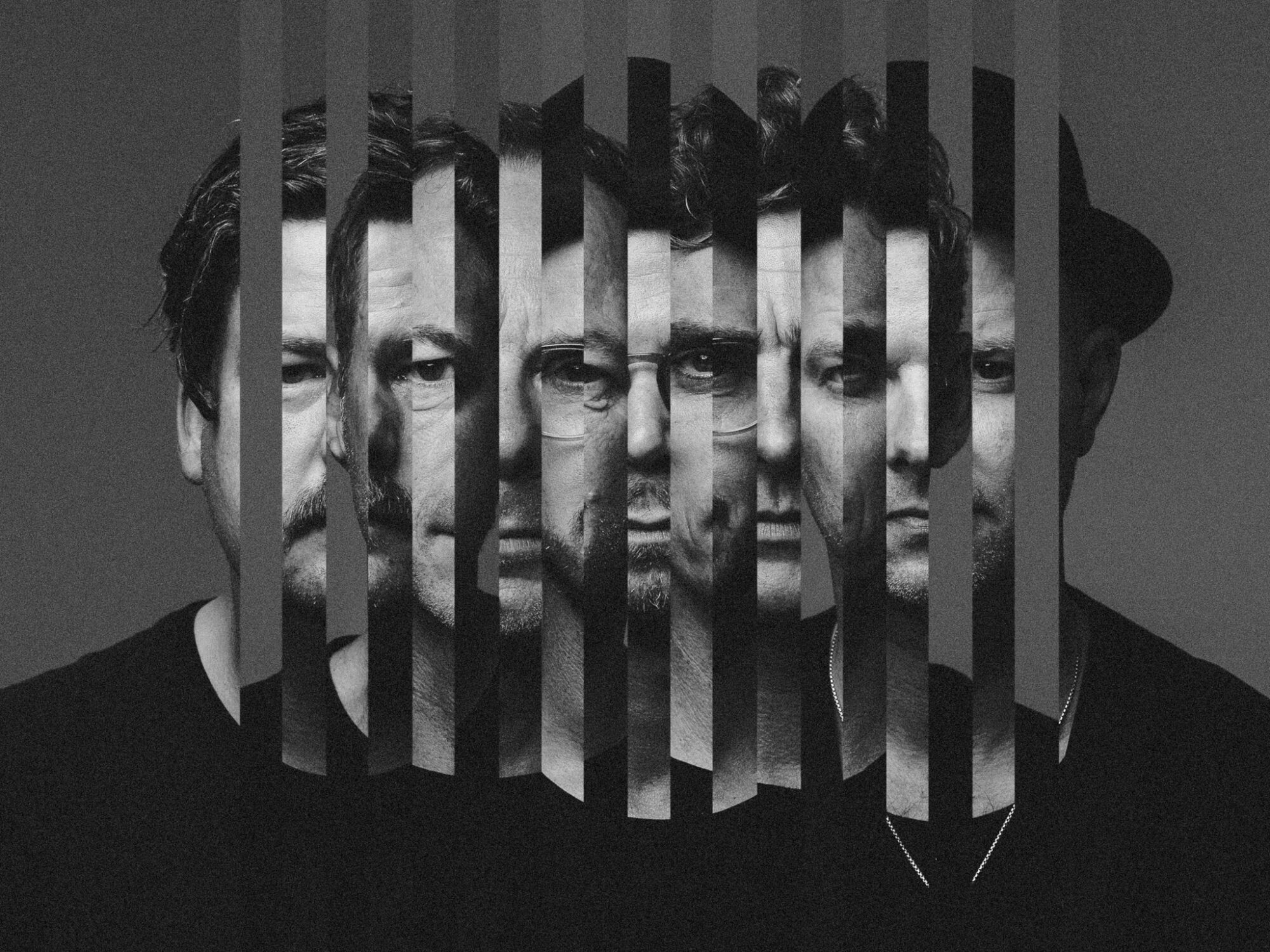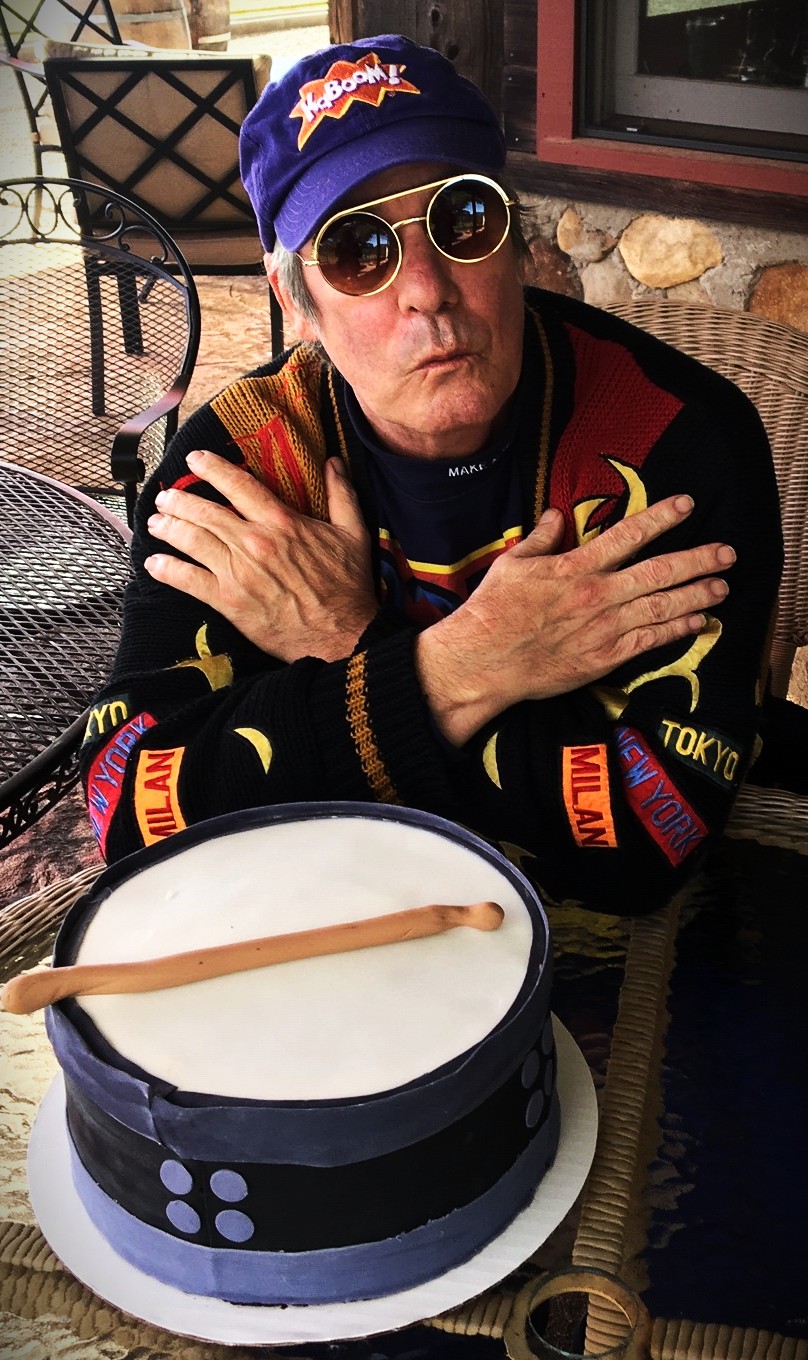Sunburned Hand of the Man on Dromfest: An Interview with the Collective
Sunburned Hand of the Man occupies a singular space in the landscape of American experimental music, where collective improvisation meets the uncharted terrain of psychedelia and free-form noise.
Since their inception in the mid-1990s, the ensemble has navigated an ever-shifting constellation of musicians, forging a sound that is as mercurial as it is immersive. Their recordings, from early cassette explorations like ‘Mind of a Brother’ to the more structured expanses of ‘Jaybird,’ reveal a commitment to process over product, capturing the spontaneity and the unpredictability of group dynamics.
What sets the band apart is their fluid integration of disparate influences—psychedelic rock, minimalism, hip-hop rhythms, and avant-garde improvisation—without descending into pastiche. The results are richly textured, ritualistic soundscapes that oscillate between meditative clarity and eruption. Collaborations with figures such as Four Tet or poet Peter Gizzi further attest to their openness to external energies, which are absorbed and transmuted into the Sunburned cosmos.
Decades of archival obsessiveness underpin their prolific output, yet the music never feels archival; it is immediate, living, and capable of transporting listeners into a liminal space where the boundaries between noise, melody, and time dissolve. Sunburned Hand of the Man remains not only a band but a continuing experiment in sonic consciousness and you can catch them at Dromfest!
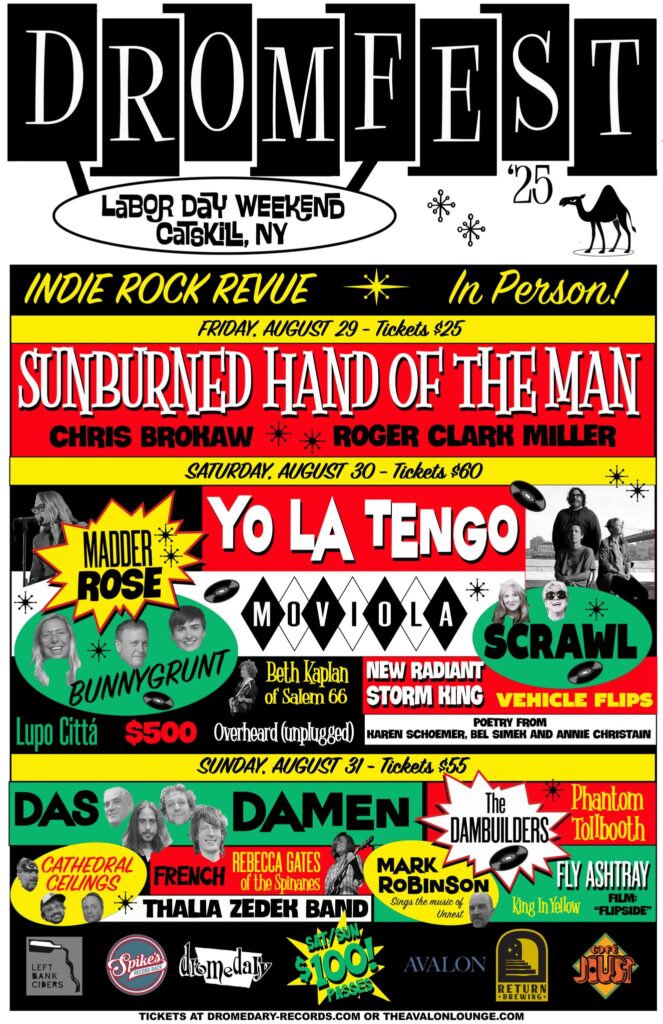
“Memory of the past is part of the present.”
You’ve been operating in your own beautiful, chaotic orbit for so long, and it feels like every release is a new adventure. Let’s dive in, shall we?
Ron Schneiderman: Hey Klemen, thanks so much. I am going to try to answer as many as I can to give you something to work with, if you feel it covers your bases. My main interest is to help promote the Dromedary story here, and the incredible gathering Al has manifested.
So, right off the bat, how much coffee (or whatever your preferred fuel is) does it take to sustain the kind of free-flowing, improvisational energy you guys bring to every recording and performance? Is there a secret blend?
Ron Schneiderman: The good thing about coffee is that you can have as much as you want without it bringing any bad results. We are not all coffee drinkers, but encourage drinking whatever sustains you, and being aware to watch for unhealthy results.
Our band’s energy is related to how any of us shows up on a given day, and being open to what that energy will cook up.
Looking back at those early days, albums like ‘Mind of a Brother’ and ‘Piff’s Clicks’ from ’97 and ’98, they had this almost proto-lo-fi vibe. What was the spirit like back then? Were you just hitting record and seeing what stuck, or was there a grander, albeit wonderfully obscured, vision forming?
John Moloney: In 1997 and 1998 the spirit was LIT. We were mostly in our 20s, and most of the core members at that time were living together at the C.O.N. Artists loft space (Sunburned’s HQ) in Charlestown, MA. Google: 7 Sherman Street, Charlestown, MA—and you’ll see the building and surrounding area, not much has changed in 30 years.
The giant white wooden space was right next to the subway tracks, next to an Irish mob-owned towing company and their private social club, backed up against the MBTA’s bus yard where Ben Affleck steals a bus in the movie The Town. The area surrounding the building was a place to abandon a stolen car or worse… a no man’s land squeezed in next to subway tracks and up against the Mystic River, which was essentially an open sewer back then.
The space was a hotbed for creativity and partying, and the neighborhood up the street had that exact Boston working-class vibe that they try to portray in films. “Go Fahk yaself!”… that kind of thing.
The space was cheap and fried. We were all working our regular jobs and jamming just about every night while listening to every “cool” record we could get our hands on. These were very formative years.
We were obsessively recording every note of music that was played onto cassettes and sometimes DATs with no reasoning behind it. Anything went. There was no structure to our group explorations and no goals to speak of. It just stayed ambient and “out” for no real reasons, mainly because it was fun.
Then you hit us with ‘Jaybird’ and ‘Wild Animal’ in 2001. Those felt like a bit of a step into something more… structured, maybe? Or at least, more overtly psychedelic. Was there a conscious shift happening around the turn of the millennium, or was it just the natural evolution of the collective consciousness?
John Moloney: The runaway train picked up speed, and this element of groove came to the surface. We were listening to a ton of Wu-Tang and related rap records around that time—we still do. If you go deep and listen to any Wu-Tang or Ghostface instrumentals around that time, you’ll hear a lot of similarities there, and that music, and the way they built those tracks, is truly, to me, the most psychedelic music out there. Everything else under the “psych” umbrella is kind of a pose in my eyes, although there are some amazing current bands out there tearing it up today. Venmo me 10 bucks and I’ll tell you who they aren’t. H ha.
Ron Schneiderman: Wow, that is heaps of awareness and praise to process. I was simply another fan when those records came out, but I remember holding that handful. I remember feeling that there was a stash of something deep and mysterious coming out of that loft space in Charlestown. Definitely the result of several wild and knowing hearts seeing what could happen. Those records differ from each other too… I gotta go back and spin them again, it’s been a while.
I hung around the life around then and eventually was honored to put out the original ‘Headdress’ LP in 2002. The energy swept me up enough to make this a source for my life for over 20 years.
Your discography is, frankly, intimidatingly vast. How do you even keep track of it all? Do you ever stumble upon an old CD-R from 2005 and think, “Wait, we made that?”
John Moloney: I am the band’s de facto archivist, and I have 99% of the band’s recordings and ephemera lightly organized at my house. I check out the old cassettes and CD-Rs from time to time and can’t believe what’s in there sometimes. We have hundreds of hours of unwatched MiniDV tape too. It could be a never-ending job for somebody to organize it all, and we could use some help… that’s another topic.
Ron Schneiderman: I stumble across stuff all the time. And everything unfolds into more than I remember being part of. Memory of the past is part of the present. When someone hit record in the past, and then maybe built that recording into a released package, they were doing a blessing to the future. Ever tend a garden? There are things growing you never noticed or intended.
Speaking of the ever-shifting lineup, how does that constant flux influence the sound? Is it a deliberate strategy to keep things fresh, or more of a natural gravitational pull that brings new cosmic wanderers into the Sunburned fold?
Ron Schneiderman: Being in constant flux is in flow with the Everything. For me, I only ever see the need to run towards such opportunities. To try to reign that in seems like a lot of struggle towards containing the possible. Do you tune your instrument, or get ‘in tune’?
There’s always been this beautiful tension in your music between pure noise and moments of stunning, almost melodic clarity. Is that something you actively strive for, or does it just happen in the heat of the moment?
John Moloney: It all happens in the moment. The magic of the project is when we reach those musical moments, and we’ve been lucky that it happens a lot.
Ron Schneiderman: Door number 2.
Let’s talk about the vibe you create. It’s often described as “ritualistic” or “trance-inducing.” When you’re in the zone, is it a conscious effort to transport the listener, or are you just getting lost in your own sonic explorations?
John Moloney: I’d say it’s mostly getting lost…
Ron Schneiderman: Door number 2.
You’ve had some fantastic collaborations over the years—like working with Four Tet on ‘Fire Escape and A.’ How do those external influences shape your process, or do you mostly just absorb them into the existing Sunburned ecosystem?
John Moloney: Funny, I was backstage at Ottawa Bluesfest the other day, and I ran into Kieran Hebden and his daughter. It was great to see him, and it got me thinking about those records and how much fun they were to make with him. Especially A, where he used the band as a sampler. Kieran is the best, and we’d love to do it again.
Ron Schneiderman: These opportunities have always been approached as unique to anyone we work with. Our work is always collaborative—listening and playing, taking time to reflect, and letting go. And seeing what others see or hear… Those records, and a bunch of other recordings we did with Kieran, still catch me off guard. There is a lot in there that goes beyond what landed on tape. Same with WEDLOCK and most other releases.
From basement shows to bigger stages, how does the environment affect your performances? Do you feed off the energy of the room, or is it more about creating your own internal universe regardless of the setting?
Ron Schneiderman: I have learned through this journey that the audience is the show. I think being in a space, no matter what size or capacity, affects how we move across the night. The energy is unwritten and demands curiosity. Here I would drop in a Paulo Freire quote about curiosity… I don’t want to show off.
Your latest album, ‘Nimbus,’ dropped recently, and it’s just incredible. It feels both classic Sunburned and yet, somehow, even more expansive. How did this album come together, and what were you guys exploring on this particular journey? The spoken word pieces on Nimbus, especially with Peter Gizzi, are really striking. It adds another layer to the already rich tapestry. Was that a new direction you wanted to push, or did it emerge organically during the sessions?
John Moloney: We recorded ‘Nimbus’ mainly because Phil Franklin was back from Australia for an extended visit, and it just felt very natural to record some stuff at Adam’s house in Turners Falls, MA. We didn’t have any kind of a game plan, but we did a couple of shows with Peter Gizzi reading with us that previous summer, and we just invited him to come up and read. We didn’t think he’d actually come! He laid those poems out in one take as well. We were all so blown away by Peter’s delivery that someone said, “Well, there’s the title of the album… during the playback of ‘Nimbus.’”
Phil had some songs that we were playing live and thought those would be cool to record as well. The LP came together naturally like a mixtape, and then we had Gary War add some amazing treatments to the three bonus tracks that ended up on the CD release. I’m really proud of that record.
Matt Krefting also came back into the fold during that session, and it opened the book to yet another long, new season of Sunburned.
Ron Schneiderman: Thank you for these kind words about the new record! ‘Nimbus’ was the result of a very definite framework within which we let things roll as uncontrolled as we could. We had been really digging into Peter’s works and hanging out with him. The vibes just worked to catch him on tape. We benefited so much from having an ace in Adam Langellotti being in the band (and also a full-time member of Kurt Vile’s band) and running a sick studio, with knowledge of how to capture the band. The clarity of purpose seemed very timely for the time, and it is really a stunning collection of sounds. I think I was on one track when the final version emerged, so there is a sense of objectivity I can also lend to my listening on that one—kinda like going back to being a fan.
What’s the biggest misconception people have about Sunburned Hand of the Man? And on the flip side, what’s something you wish more people understood about what you do?
John Moloney: I don’t have the time to think about how people perceive us, nor am I that invested to where I need to help people understand what we do. I do feel grateful every day for the people I know and experiences I’ve had around the band. It keeps going.
Ron Schneiderman: They can take what they need. Misconceptions are welcome too. I think folks bring what they want to anything and get what they are looking for. I do not think we can do anything to determine or direct anyone’s experience.
If you could give one piece of advice to a young band just starting out, trying to navigate the wild west of independent music, what would it be?
John Moloney: Learn how to talk to and respect people on a basic level and it’ll all be okay. Be nice to everybody.
Okay, last one, and it’s a big one because we’re hyped for this: You’re headlining Friday at Dromfest 2025! What are you most looking forward to about Dromfest, and can we expect some surprises, some deep cuts, or maybe even something entirely new when you hit that stage? Give us a hint, man!
John Moloney: We’re truly psyched to be asked to play and it’s an honor to be included with a lot of the bands who were influential and supportive to us when we started out in Boston and Cambridge. Who knows what’ll happen… or even better, “you tell me what’s gonna happen…”
Ron Schneiderman: It’s such a treat to be asked to play at Dromfest. Personally, I have known Al and Sandy for over 30 years. I knew Dromedary when it was Footstone, Cuppa Joe, and Melting Hopefuls records. The label represents what the deep underground can be if it stays true to being a caring, enthusiastic, and dedicated community. Headlining on Friday night is gonna be great, and look at the Saturday lineup: Yo La Tengo AND Moviola… only Al could have pulled that off!
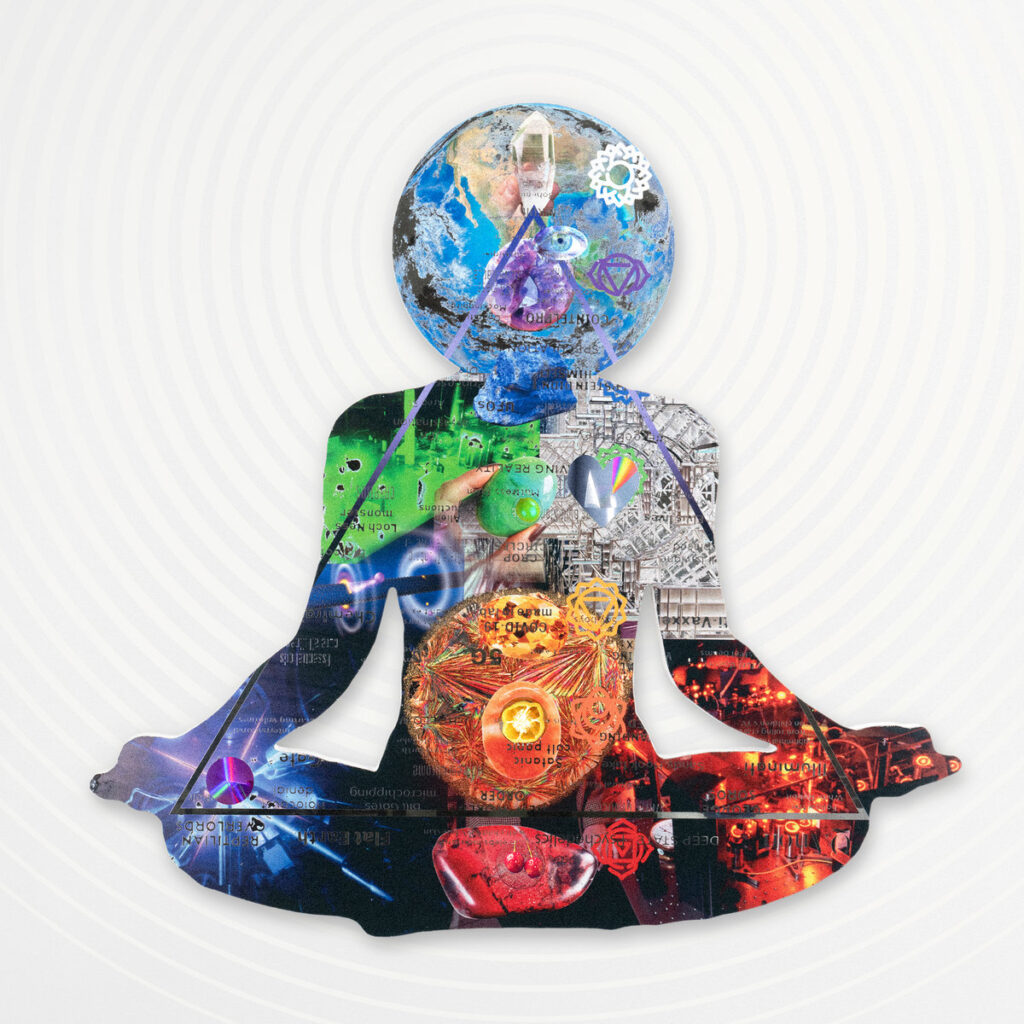
What if I were to invite you to my place in this little town and we have the whole day spinning records… what kind of stuff would we listen to? Weird, wacko, complete lo-fi underground, maybe some cosmic privately pressed jazz? Tell us some records that are not often mentioned…
Ron Schneiderman: Lately my phone has been flipping between Wackies samplers, Melanie Martinez, and lots of Jason Molina. And whatever the algorithm chooses when I forget to check. I am certain there are far deeper cuts others would bring to your party.
Klemen Breznikar
Headline photo: Sunburned Hand Of The Man | Photo by Arkan Zakharov
Sunburned Hand Of The Man Website / Facebook / Instagram / YouTube / Bandcamp
